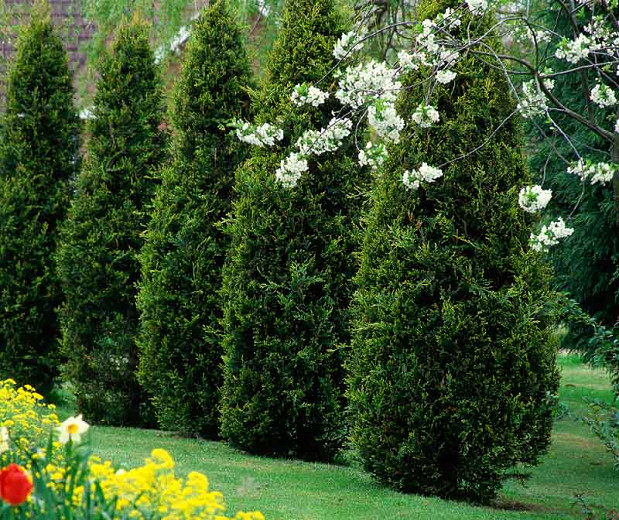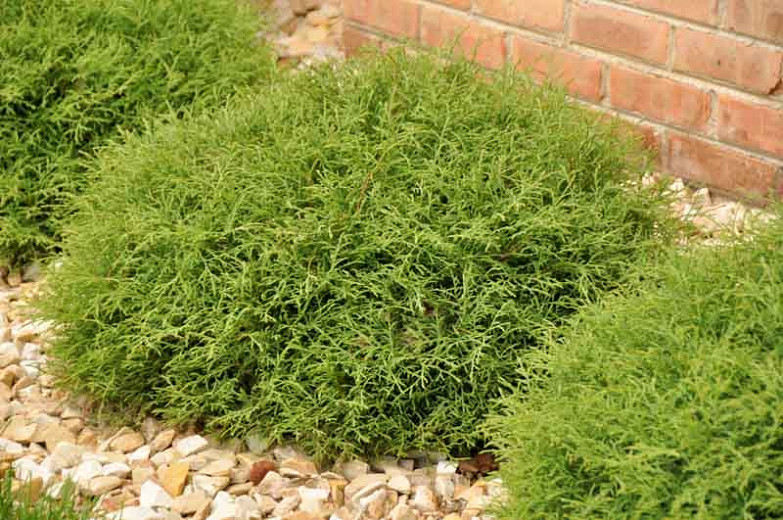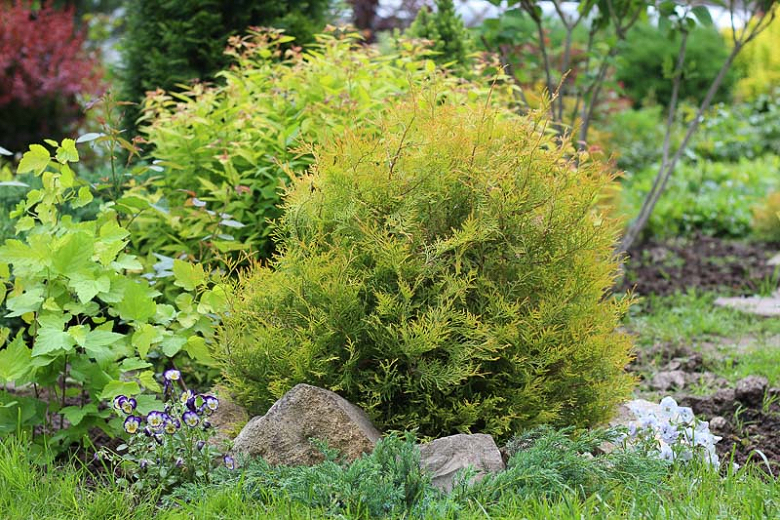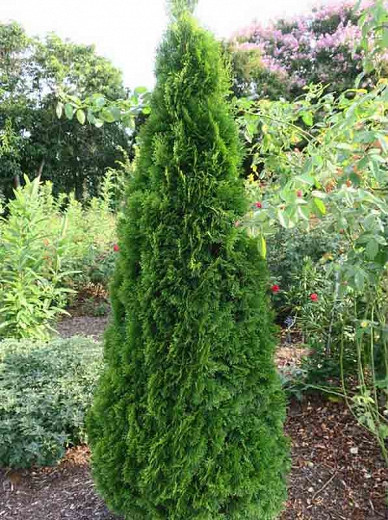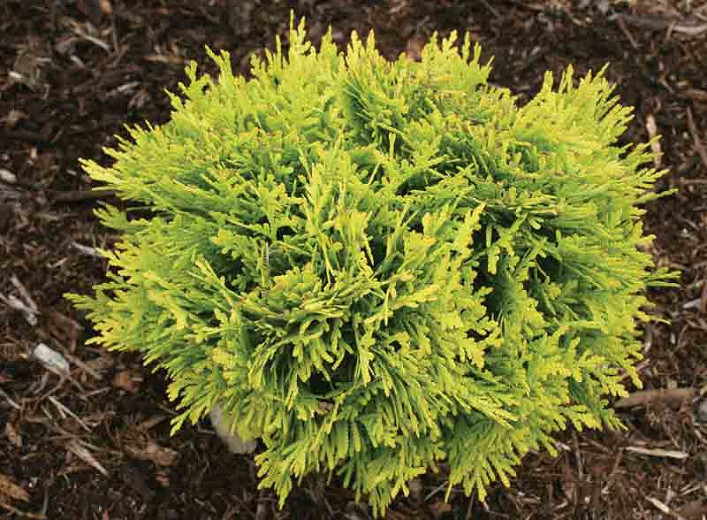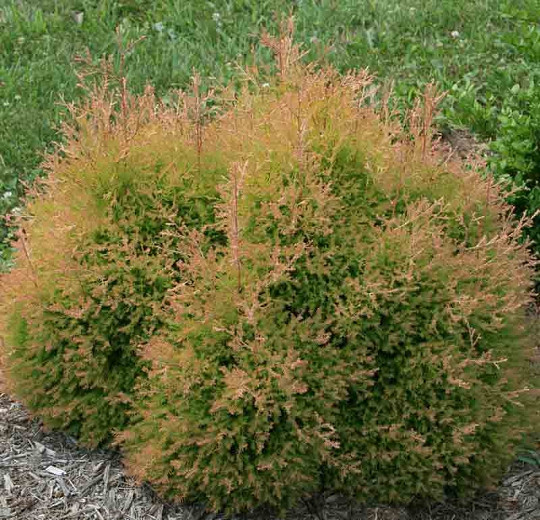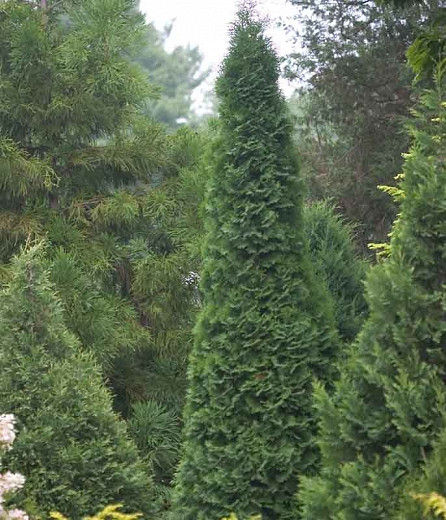Thuja occidentalis (American Arborvitae)
Colorful and versatile, Thuja occidentalis (American Arborvitae) is a dense, conical to columnar, evergreen tree with flat, spreading sprays of aromatic, scale-like foliage. Rich green to blue-green in summer, the foliage often turns yellowish green to brownish green in winter, particularly if the plant is exposed to winter sun and wind. It can be single- or multi-trunked and its gray-brown to gray bark exfoliates on mature branches and trunks, revealing the reddish bark underneath. Forming a majestic exclamation point in the landscape, it is reliable and cold weather resistant. Slow-growing and long-lived (up to 1,500 years!), American Arborvitae if perfect for use as a specimen, screen or hedge, around foundations and in groupings. This highly aromatic conifer provides food and cover for many species of birds.
- Grows up to 20-40 ft. tall (6-12 m) and 10-15 ft. wide (3-5 m).
- A full sun lover, this plant is easily grown in average, moist, well-drained soils. Usually appreciates some light afternoon shade in hot summer climates. Bear in mind that foliage density loosens up in too much shade. Tolerates a wide range of soils including heavy clay, almost pure sand, gravelly soils, moderately dry soils, and wet soils. Intolerant of dry conditions. Protect from drying winds, especially when young.
- May be affected by leaf blight, canker, leaf miner, bagworms, mealybug, scales and spider mites. Deer browse can be a serious problem.
- Low maintenance, American arborvitae tolerates shearing well for a more tailored shape. Prune in early spring before onset of new growth. Provide a generous root zone mulch
- Propagate by semi-hardwood cuttings
- Where is this species invasive in the United States.
- Native to eastern North America.
Requirements
| Hardiness | 2 – 7 |
|---|---|
| Heat Zones | 1 – 7 |
| Climate Zones | 1, 1A, 1B, 2, 2A, 2B, 3, 3A, 3B, 4, 5, 6, 7, 8, 9, 15, 16, 17, 21, 22, 23, 24, A2, A3, H1, H2 |
| Plant Type | Conifers, Trees |
| Plant Family | Thuja |
| Exposure | Full Sun |
| Season of Interest | Spring (Early,Mid,Late)Summer (Early,Mid,Late)FallWinter |
| Height | 20' – 40' (6m – 12m) |
| Spread | 10' – 15' (3m – 4.5m) |
| Water Needs | Average |
| Maintenance | Low |
| Soil Type | Chalk, Clay, Loam, Sand |
| Soil pH | Acid, Alkaline, Neutral |
| Soil Drainage | Moist but Well-Drained |
| Characteristics | Showy, Evergreen |
| Native Plants | United States, Midwest, Illinois, Indiana, Iowa, Michigan, Minnesota, Ohio, Wisconsin, Northeast, Connecticut, Maine, Massachusetts, Maryland, New Hampshire, New Jersey, New York, Pennsylvania, Rhode Island, Vermont, Southeast, Kentucky, North Carolina, Tennessee, Virginia, West Virginia |
| Tolerance | Clay Soil, Wet Soil |
| Attracts | Birds |
| Garden Uses | Beds and Borders, Hedges and Screens |
| Garden Styles | Informal and Cottage, Prairie and Meadow |
